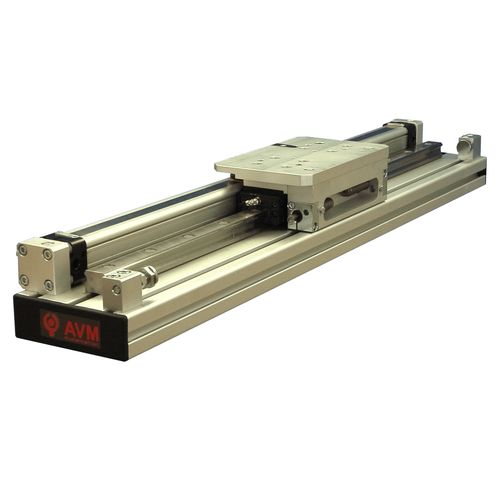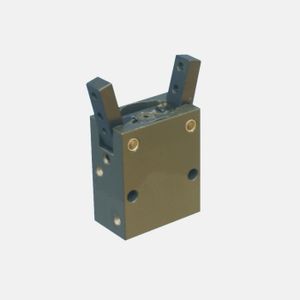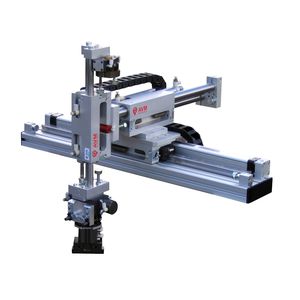
- Company
- Products
- Catalogs
- News & Trends
- Exhibitions
Cartesian linear gantry module Type 35pneumatic



Add to favorites
Compare this product
Characteristics
- Type
- Cartesian, pneumatic
Description
Drived by pneumatic cylinder (ISO or rodless)
Guided by rolling guides
Adjustable mechanical stops
Hydraulic shock absorbers
Inductive sensors
Flow limitation
Options :
Intermediate position(s) on 357 with through-travel
More than a rodless guided cylinder
With their self-supporting aluminum beam and being equipped with mechanical end-of-stroke stops, hydraulic shock absorbers, inductive sensors and flow limiters, these gantries are more than a cylinder without guided rod, they are real handling axes ready to install and wired.
They are intended for the transfer of loads from 3 to 50 kg over strokes up to 1500 mm.
Pneumatic Cartesian manipulators
The mobile carriage, drived by a rodless cylinder (or a rod cylinder in short stroke to be more economical) allows to carry a perpendicular axis to create cartesian manipulators with 2 or 3 axes, with manipulators Type 37.
Optimized end of stroke adjustments
The fine adjustment of the stroke is done by mechanical stops without any intervention on the hydraulic dampers and the inductive detectors: this saves time, guarantees the reliability of the adjustment and ensures an optimal lifetime of these components.
Pneumatic gantry with intermediate positions with through-travel
Model 357 has an intermediate position module that can be placed anywhere in the stroke. It can retract in the direction of movement, which avoids a retreat to continue the movement in the same direction. It guarantees the same positioning accuracy as the end stops. It is possible to use several on the same gantry to create a pneumatic multi-position axis.
Catalogs
Gantry for handling Type 35
10 Pages
Related Searches
- Cylinder
- AVM positioning stage
- Double-acting cylinder
- Pneumatic cylinder
- AVM linear positioning stage
- Motorized stage
- Precision stage
- Pneumatic manipulator arm
- Materials handling manipulator arm
- Compact cylinder
- 1-axis stage
- AVM manual positioning stage
- Manipulator arm with gripping tool
- Linear unit
- Industrial cylinder
- Anodized aluminum cylinder
- Handling manipulator arm
- Industrial manipulator arm
- 2-axis stage
- Compact stage
*Prices are pre-tax. They exclude delivery charges and customs duties and do not include additional charges for installation or activation options. Prices are indicative only and may vary by country, with changes to the cost of raw materials and exchange rates.














